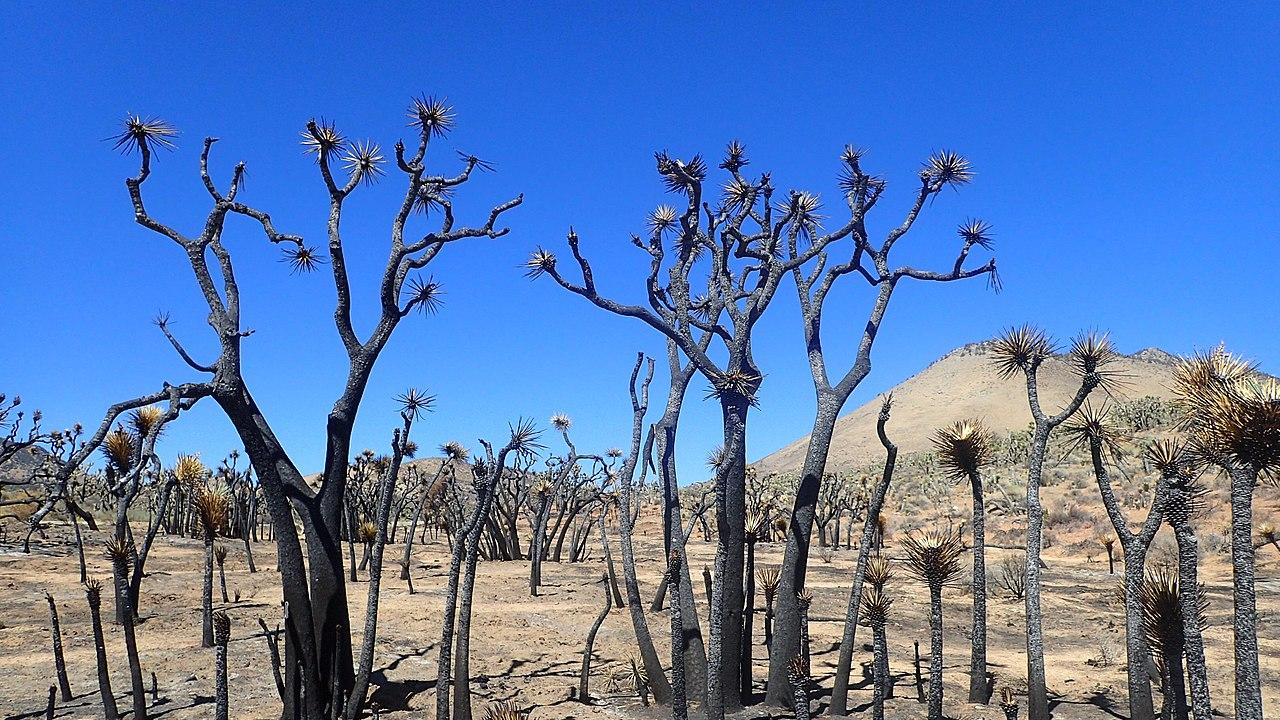
Wildfires linked to invasive grasses, Valliere says
Auto emissions 'fertilize' fuel
Joshua trees burning in the Mojave Desert are the victims of changing patterns of wildfire, fueled by the spread of grasses that are not native to the region, restoration ecologist Justin Valliere told media in recent interviews.

In late July, Valliere was still settling into his new job at the Department of Plant Sciences when the York Fire erupted in the Mojave National Preserve in southern California. The area includes the western range of the Joshua tree, a unique type of yucca that has been compared to the other-worldly drawings of Dr. Seuss. The fire drew national media attention to the trees’ vulnerability, in an area where fire is uncommon and plants are not adapted to it.
Valliere, who specializes in the impacts of invasive grasses, drew the links connecting non-native invaders, air pollution and the existential threat fire now poses to the beloved trees.
“Invasive grasses in the Mojave Desert are completely altering the fire regime there… and leading to more frequent fires,” Valliere told the Washington Post.
Non-native grasses already have spread across large swaths of southern California. One factor sparking their growth, including in parts of the Mojave, is air pollution from populated areas. Emissions from cars and trucks contain nitrogen, which is like fertilizer that floats into the air, then dumps all over the landscape, Valliere told radio station KPCC-FM, part of Southern California Public Radio.
Nitrogen pollution “might seem like a good thing, but a lot of research, including my own, has shown that it really favors these invasive species over native species,” Valliere told the radio host.
The non-native grasses are tough and don’t break down as quickly as native flowers. “They dry out really quickly in spring and summer… (creating) this continuous fuel bed across landscapes,” Valliere continued. “They catch fire really easily, then they carry fire very well” from tree to tree.
While air pollution "fertilizer" probably is not a major factor in the York Fire, due to its location, nitrogen does contribute to fire danger in other parts of the Mojave and elsewhere in the state. "Invasive grasses do very well in areas without nitrogen deposition, too, but where nitrogen does blow in, it makes their impacts even greater," Valliere explained.
Invasive grasses are “just so widespread at this point that there’s no way we’re ever going to eradicate them,” Valliere said. “We need to focus our efforts on really sensitive areas or areas where we’re trying to restore native vegetation after a disturbance like a fire.”

Related links
Valliere has spent years researching native landscapes and how to restore them in southern California. He now is an assistant professor of UC Cooperative Extension, specializing in landscape restoration.
The York Fire was contained on Aug. 20, after burning more than 93,000 acres in southern California and Nevada. Three years ago, the nearby Dome Fire scorched more than 43,000 acres and killed an estimated 1.3 million Joshua trees, the U.S. National Park Service reported.
Read Valliere’s comments in the Washington Post article, “Wild, weird and iconic, California’s Joshua trees face a new threat: fire.”
Listen to Valliere’s comments in the podcast, “Wildfires are threatening beloved Joshua trees in the Mojave Desert,” by KPCC-FM radio, a member of Southern California Public Radio.
Media Resources
- Trina Kleist, UC Davis Department of Plant Sciences, tkleist@ucdavis.edu, (530) 754-6148 or (530) 601-6846
